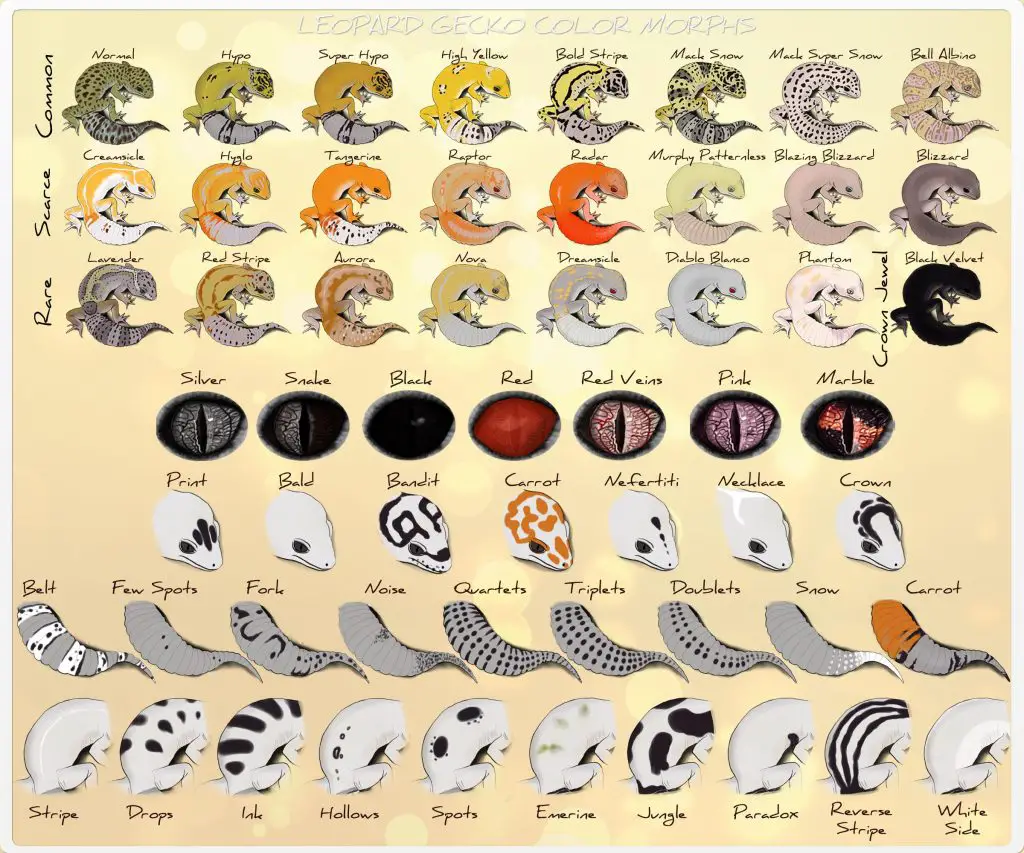Leopard geckos are fascinating creatures that make great pets for reptile enthusiasts. Breeding leopard geckos can be a rewarding experience, but it also requires knowledge and preparation. In this guide, we will walk you through the steps of leopard gecko breeding, from selecting the right breeding pair to caring for the eggs and hatchlings.
Breeding leopard geckos can be a rewarding experience for reptile enthusiasts. To start, you’ll need a male and female gecko, a suitable enclosure, and the right temperature and humidity levels. Provide a healthy diet and plenty of hiding spots for the female to lay her eggs. Incubate the eggs at the correct temperature and humidity for successful hatching. With proper care and attention, you can successfully breed and raise leopard geckos.

Leopard Gecko Breeding Guide: Everything You Need to Know
Breeding leopard geckos can be a rewarding experience for pet owners. However, it is important to have a thorough understanding of the process and requirements to ensure the health and safety of the geckos. In this guide, we’ll cover everything you need to know about breeding leopard geckos.
1. Choosing Breeding Pairs
When selecting breeding pairs, it is important to choose healthy, mature geckos that are at least one year old. You should also avoid breeding siblings or closely related geckos to prevent genetic issues. Before breeding, ensure that the geckos are in good health and have been properly fed and hydrated.
Once you have selected your breeding pairs, you will need to provide them with a suitable enclosure. A 20-gallon tank is recommended for a pair of geckos, with plenty of hiding spots and a heat source to maintain a temperature range of 88-90°F during the day and 70-75°F at night.
2. Breeding Season
Leopard geckos typically breed between January and September, with peak breeding season occurring from March to May. During this time, male geckos will become more active and vocal, and may display territorial behavior. Female geckos will also display receptive behavior, such as wagging their tails and assuming a submissive posture.
3. Mating
When the female gecko is ready to mate, she will assume a receptive posture and allow the male to mount her. Mating can occur several times over a period of days, and can result in multiple clutches of eggs.
4. Egg Laying
After mating, the female gecko will lay eggs within 2-4 weeks. A suitable egg-laying container, such as a plastic container filled with moist vermiculite or perlite, should be provided in the enclosure. The female will lay 2 eggs at a time, burying them in the substrate.
5. Incubation
Leopard gecko eggs require an incubation period of approximately 45-60 days. The eggs should be kept in the egg-laying container and placed in an incubator with a temperature range of 82-88°F. It is important to maintain a consistent temperature and humidity level during incubation.
6. Hatching
When the eggs are ready to hatch, you will notice a small slit in the egg. The gecko will emerge from the egg within 24-48 hours, and should be left in the incubator until it has fully absorbed the yolk sac. Once the gecko is fully absorbed, it can be moved to a separate enclosure.
7. Caring for Hatchlings
Hatchlings should be kept in a small enclosure with suitable substrate, hiding spots, and a heat source. They should be fed a diet of small insects, such as crickets or mealworms, dusted with calcium and vitamin supplements. It is important to monitor their growth and development, and provide proper nutrition and hydration.
8. Benefits of Breeding Leopard Geckos
Breeding leopard geckos can be a rewarding experience for pet owners, as it allows for the growth and expansion of their collection. It can also provide the opportunity to produce unique and desirable morphs, which can be sold or traded with other gecko enthusiasts.
9. Breeding Leopard Geckos vs. Other Reptiles
Compared to other reptiles, leopard geckos are relatively easy to breed and care for. They have a shorter incubation period and require less space and maintenance compared to larger reptiles. Additionally, they are a popular and in-demand pet, making them a potentially profitable breeding endeavor.
10. Conclusion
Breeding leopard geckos can be a rewarding and enjoyable experience for pet owners. By selecting healthy breeding pairs, providing proper care and nutrition, and understanding the breeding and incubation process, you can successfully breed leopard geckos and produce unique and desirable morphs.
Frequently Asked Questions:
Learn everything you need to know about breeding leopard geckos with our comprehensive guide. Here are some common questions that you may have:
What is the best age to breed leopard geckos?
Leopard geckos can be sexually mature as early as 8 months, but it is recommended to wait until they are at least a year old before breeding. Breeding them too early can cause health problems and result in smaller clutch sizes. Additionally, it is important to ensure that both the male and female are healthy and at a good weight before breeding.
It is also important to note that leopard geckos can breed for several years, so there is no rush to breed them right away.
How do I set up a breeding enclosure for leopard geckos?
The breeding enclosure should be at least 20 gallons and have a temperature gradient of 88-90°F on the warm side and 75-80°F on the cool side. A moist hide should also be provided for the female to lay her eggs, and a separate lay box can also be added. The substrate should be something that can hold moisture, such as coconut fiber or sphagnum moss.
It is also important to provide a calcium supplement and ensure that the female is getting enough food and water throughout the breeding process.
How do I introduce the male and female leopard geckos?
It is important to introduce the male and female slowly and carefully to prevent any injuries. The male should be introduced to the female’s enclosure, and not the other way around. It is also recommended to supervise them during the introduction process.
If the male is showing aggressive behavior towards the female, it is best to separate them and try again at a later time.
How long does it take for leopard gecko eggs to hatch?
Leopard gecko eggs typically take around 45-60 days to hatch. During this time, it is important to keep the eggs at a consistent temperature of around 82-84°F and keep the substrate moist. The eggs should also be checked regularly for any signs of mold or fungus.
Once the eggs hatch, it is important to keep the hatchlings in a separate enclosure and provide them with the appropriate food and care.
What should I do if my leopard geckos are not breeding?
If your leopard geckos are not breeding, it could be due to several factors such as age, health, or environmental conditions. It is important to ensure that both the male and female are healthy and at a good weight, and that the breeding enclosure is set up correctly.
If breeding still does not occur, it may be necessary to consult with a veterinarian or experienced breeder for further advice.
In conclusion, breeding leopard geckos can be a rewarding and exciting experience for any reptile enthusiast. However, it is important to remember the various requirements and responsibilities that come with this process.
Firstly, it is crucial to ensure that you have a healthy male and female leopard gecko, both of which have reached sexual maturity. Additionally, proper housing, diet, and temperature regulation must be maintained to ensure successful breeding and healthy hatchlings.
Furthermore, it is important to note that not all leopard geckos may be suitable for breeding, and it is essential to research and understand the genetic traits and potential health issues that may arise from breeding certain individuals. Overall, with the proper preparation and knowledge, breeding leopard geckos can be a fulfilling and educational experience for any reptile enthusiast.


